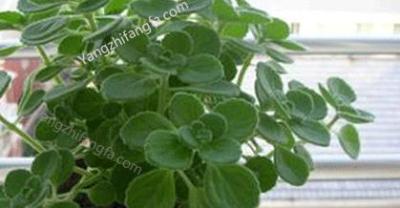Purple pearl cultivation methods and precautions
Name: purple Pearl Echeveria Perle von Nurnberg
Families and genera: Rhodiola of crassulaceae
Morphological features:
Purple pearl is a perennial succulent herb, small and medium-sized varieties. The fleshy leaves of the plant are arranged in a compact rosette. Purple-gray leaves inward depression has obvious twists and turns, under strong light or large temperature difference, the leaves will appear beautiful pink to purplish red. In low light, the leaf color is light grayish green, the leaf is elongated, and the color becomes gray. The leaves are smooth and do not accumulate water easily. The leaves have a slight white powder, and the purple pearl needs to receive enough sunshine before the leaf edge will be gorgeous, and the plant type will be more compact and beautiful. after many years of group growth, the plant will be very spectacular, especially the old pile that has been pruned for many years. Purple pearl clusters of flowers in red and pink, the same pattern as most stone lotus flowers.

Main points of cultivation:
Purple pearl needs plenty of sunshine and cool, dry environment, resistant to semi-overcast, afraid of waterlogging, avoid muggy and humid. It has the habit of growing in cool season and dormant at high temperature in summer.
The period from September to June of the second year is the growing period of the plant (the environment of the flower friend is different, the growing period is also short). If the light is not enough, the leaves will grow too long, and the pink of the leaves will fade slowly; while the plants that grow in sunny places, the plant type is short and strong, and the leaf arrangement will be compact.
It is necessary to keep the soil moist and avoid stagnant water during the growing period. Soil kites use cinder mixed peat, a small amount of perlite, the proportion of about 5:4:1, the soil surface laid with large particles of river sand.
Summer and winter maintenance:
In winter, Purple Pearl can withstand a low temperature of about minus 4 ℃, which is the indoor temperature. If it is not in the open air, the top growing point of the lower leaves will appear frostbite, dry up and die. The water will be cut off basically throughout the winter, and the water will begin to be cut off slowly below 5 degrees.
When the summer high temperature, the whole plant growth is slow or completely stopped, at this time to be well ventilated and properly shaded, avoid exposure, control watering, not long-term rain, so as to avoid plant rot.
Mode of reproduction:
The reproduction of purple pearl is usually cuttage and leaf cutting. the cut plants can be cut directly in the dry granular soil, and a small amount of water can be supplied after rooting.
The leaf insertion method is to take the complete and full leaves, put them in a cool place to dry the wound (directly take off the leaves and throw them on the soil surface, the leaf wounds do not touch the soil), and then put them on the slightly wet soil, it will slowly grow roots and sprout, the process is a bit long, but you can get a lot of small lateral buds, lateral buds grow, take off the cuttings.
-
Knowledge of flower cultivation
Wechat: yanghua29
Flower cultivation knowledge, ask and answer, solve the problem of flower cultivation!
- Prev

Breeding crayfish: how many shrimps, look at aquatic plants
Crayfish culture is very hot, all want to dry, lobster said I am in crayfish farming "pilgrimage" Qianjiang, crayfish to raise good, water grass is not.
- Next

Do you like a green house? Do you like a home full of poetic feelings? Do you like a comfortable and warm home? If you like it, then do it. We can plant plants from home.
Related
- On the eggshell is a badge full of pride. British Poultry Egg Market and Consumer observation
- British study: 72% of Britons are willing to buy native eggs raised by insects
- Guidelines for friendly egg production revised the increase of space in chicken sheds can not be forced to change feathers and lay eggs.
- Risk of delay in customs clearance Australia suspends lobster exports to China
- Pig semen-the Vector of virus Transmission (4)
- Pig semen-the Vector of virus Transmission (3)
- Five common causes of difficult control of classical swine fever in clinic and their countermeasures
- Foot-and-mouth disease is the most effective way to prevent it!
- PED is the number one killer of piglets and has to be guarded against in autumn and winter.
- What is "yellow fat pig"? Have you ever heard the pig collector talk about "yellow fat pig"?

